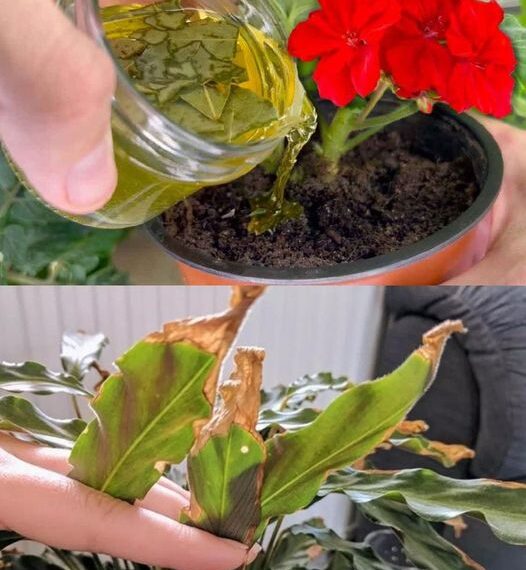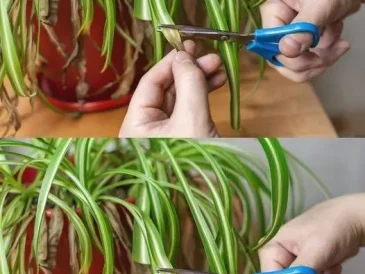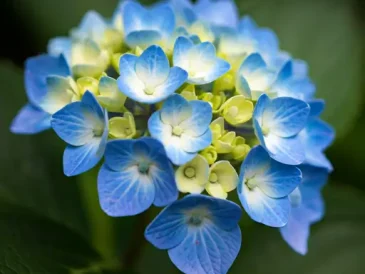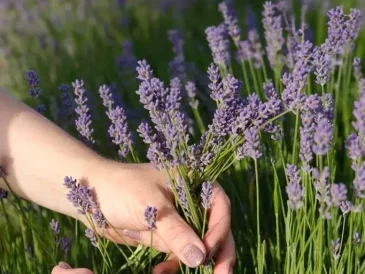Every gardener, whether a seasoned professional or a casual plant lover, has faced the discouraging sight of yellowed, wilted, or seemingly lifeless plants. It’s easy to assume that a plant is beyond saving, but with the right care and a touch of natural magic, you can often bring even the most stressed and withered plants back to life. The secret? A simple ingredient that’s likely already sitting in your kitchen—Epsom salt.
Yes, that’s right. Epsom salt, or magnesium sulfate, is a miracle worker in the garden. It provides essential nutrients that can turn yellowing leaves into vibrant green foliage and help revive a struggling plant back to its former glory. Let’s dive into how Epsom salt can transform your yellowed, drooping plants into healthy, flourishing ones.
Why Epsom Salt is a Lifesaver for Plants
Epsom salt contains two crucial elements: magnesium and sulfur. These are both essential nutrients that plants need for various physiological functions:
- Magnesium is a critical element for chlorophyll production, the green pigment in plants that allows them to photosynthesize. Without enough magnesium, plants can’t produce enough energy from sunlight, which leads to yellowing leaves, poor growth, and reduced vigor.
- Sulfur is another essential nutrient involved in producing amino acids, proteins, and enzymes that are critical to plant growth.
When a plant becomes yellow and lifeless, it may be suffering from magnesium deficiency or nutrient imbalance. Epsom salt addresses this issue, giving the plant an immediate boost in health.
Signs That Your Plant Needs Epsom Salt
Before diving into how to use Epsom salt, it’s important to recognize when a plant is crying out for help. Some key symptoms that indicate your plant might need a boost from Epsom salt include:
- Yellowing Between Leaf Veins (Chlorosis): When the area between the leaf veins turns yellow while the veins remain green, it’s a sign of magnesium deficiency.
- Weak and Leggy Growth: If your plant looks stretched out and frail, it could indicate a lack of magnesium or sulfur.
- Drooping and Curling Leaves: Inadequate magnesium can result in weak leaves that droop or curl at the edges.
- Lack of Flowering or Fruiting: If your plant isn’t producing flowers or fruit as expected, it could be lacking the nutrients provided by Epsom salt.
How to Use Epsom Salt to Revive Plants
Reviving a dying or yellowed plant with Epsom salt is quick, easy, and cost-effective. Here’s a simple step-by-step guide:
How to Use Epsom Salt to Revive Plants
Reviving a dying or yellowed plant with Epsom salt is quick, easy, and cost-effective. Here’s a simple step-by-step guide:
1. Dissolve Epsom Salt in Water
- For houseplants or garden plants: Dissolve 1 tablespoon of Epsom salt in 1 gallon of water.
- For large garden beds: Use 1 cup of Epsom salt per 100 square feet of soil.
2. Apply to the Soil or Use as a Foliar Spray
- Soil Application: Pour the Epsom salt solution directly around the base of the plant. This allows the magnesium and sulfur to be absorbed through the roots.
- Foliar Spray: For faster absorption, you can use a spray bottle to mist the solution directly onto the leaves. This is especially effective for magnesium deficiency, as the leaves will absorb the nutrients directly.
3. Repeat Every Two to Four Weeks
- Continue applying the Epsom salt solution once every 2 to 4 weeks during the growing season to maintain your plant’s health and vigor.
The Science Behind Epsom Salt’s Success
So, why does this simple ingredient work so well? Magnesium plays a key role in chlorophyll production, which is essential for photosynthesis—the process by which plants convert sunlight into energy. Without enough magnesium, plants struggle to produce chlorophyll, leading to yellowed leaves and stunted growth.
In addition, sulfur in Epsom salt helps improve enzyme activity, protein formation, and nutrient absorption. Together, these two nutrients can jumpstart a plant’s growth and rejuvenate its appearance in just a few weeks.
Which Plants Benefit the Most from Epsom Salt?
Although Epsom salt can be used for most plants, some species respond particularly well to its application. Here are a few:
- Tomatoes: Tomatoes are heavy feeders that require plenty of magnesium for healthy fruit production. Epsom salt can help prevent blossom end rot and promote larger, juicier tomatoes.
- Peppers: Like tomatoes, peppers need magnesium for strong growth and a bountiful harvest.
- Roses: Roses thrive when given Epsom salt, which encourages greener foliage and bigger blooms.
- Houseplants: Yellowing houseplants, particularly those kept indoors, often suffer from nutrient deficiencies. Epsom salt can perk them up quickly.
- Leafy Greens: Vegetables like spinach and lettuce benefit from the added nutrients and will produce lush, green leaves.
Other Benefits of Using Epsom Salt in the Garden
In addition to reviving yellowed and wilting plants, Epsom salt has a few other uses in the garden:
- Prevents Pests: Epsom salt can deter certain garden pests like slugs and snails. Sprinkle a small amount around the base of plants to keep these invaders at bay.
- Improves Seed Germination: When starting seeds indoors or in the garden, adding a small amount of Epsom salt to the soil helps improve seed germination and enhances early growth.
- Increases Nutrient Absorption: Epsom salt helps plants better absorb other nutrients like nitrogen and phosphorus from the soil, enhancing overall plant health.
Conclusion
If you’ve ever felt the heartbreak of watching a beloved plant turn yellow and wither away, know that there’s hope. With the power of Epsom salt, you can revitalize even the most distressed plants and bring them back to life. By understanding the role that magnesium and sulfur play in plant health, you can use this simple, affordable ingredient to keep your garden lush and vibrant.
So, next time you spot a struggling plant, reach for the Epsom salt and watch as your garden transforms from lifeless to lively in just a few weeks.




